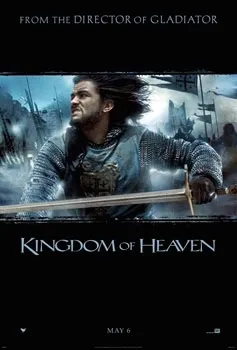Historical accuracy of Kingdom of Heaven

Historical accuracy of Kingdom of Heaven

Characters
Balian of Ibelin
Balian of Ibelin was a real historical figure, a noble who played a significant role in the defense of Jerusalem. The film takes creative liberties with his background and personal journey, but his actions during the siege are rooted in historical events.
Saladin
Saladin is portrayed as a noble and respected military leader, which aligns with historical accounts. The film generally avoids demonizing him, presenting a more balanced view of the conflict. He was the Sultan of Egypt and Syria.
King Baldwin IV
Baldwin IV was a real historical figure, the King of Jerusalem, known as the Leper King. The film accurately depicts his illness and his efforts to maintain peace in the region.
Tiberias
Tiberias is a fictionalized representation of Raymond III of Tripoli, a key figure in the Kingdom of Jerusalem. The film portrays his role as a wise advisor and his efforts to maintain peace, though his character is a composite of several historical figures.
Guy de Lusignan
Guy de Lusignan was a real historical figure, the King of Jerusalem, known for his role in provoking conflict with Saladin. The film accurately portrays his ambition and his role in the lead-up to the Battle of Hattin, although the film does simplify his character.
Sibylla of Jerusalem
Sibylla of Jerusalem was a real historical figure and the sister of Baldwin IV. The movie presents some of the facts of her life, but also includes fictionalized romance.
Story
Balian's blacksmithing skills
Balian was indeed a skilled military leader, but his primary role was not blacksmithing. The film emphasizes this skill for dramatic purposes, though it's not historically central to his character.
Balian's relationship with Sibylla
Balian and Sibylla's relationship is romanticized in the film. While they did have a relationship and marriage, the film simplifies the complexities and political implications of it.
The Battle of Hattin
The film depicts the Battle of Hattin, but it takes some liberties with the details of the battle. While the overall outcome is correct, some tactical aspects are simplified or changed for dramatic effect.
The siege of Jerusalem
The siege of Jerusalem is a central event in the film, and while the overall narrative is accurate, some details are altered. The film simplifies the complexities of the siege and the negotiations that followed.
Balian's role in defending Jerusalem
Balian's leadership during the defense of Jerusalem is historically accurate. He played a crucial role in organizing the city's defenses in the absence of other prominent nobles.
The relationship between Balian and his father
The film introduces a subplot about Balian's father, which is not based on historical evidence. This element is added for dramatic effect and to provide a backstory for Balian's character.
The political maneuvering surrounding the throne of Jerusalem
The film accurately depicts the complex political landscape and the power struggles surrounding the throne of Jerusalem, particularly after the death of Baldwin IV. The various factions and their ambitions are generally well-represented.
Setting
The political intrigue in the Crusader states
The film portrays the political rivalries and power struggles within the Crusader states, which is an accurate reflection of the historical context. These internal conflicts significantly impacted the course of events.
The portrayal of the Hospitallers and Templars
The film features the Hospitallers and Templars, but their portrayal is somewhat simplified. While their presence and influence are acknowledged, the nuances of their roles and rivalries are not fully explored.
The overall tone of religious conflict
The film acknowledges the religious dimension of the Crusades but also tries to present a more nuanced view, showing instances of cooperation and understanding between different faiths. While religious fervor was a significant factor, the film's portrayal is somewhat moderated compared to some historical interpretations.
The depiction of everyday life in Jerusalem
While the film attempts to recreate the look and feel of medieval Jerusalem, it's difficult to definitively judge its accuracy. Much of our understanding of daily life relies on limited archaeological and textual evidence, leading to some degree of speculation in any cinematic representation.
The motivations of the Crusaders
The film touches upon the various motivations of the Crusaders, including religious zeal, economic opportunity, and the desire for land. However, it simplifies these motivations to some extent, focusing primarily on the characters' personal journeys.
The depiction of leprosy in the 12th century
The film's portrayal of Baldwin IV's leprosy is generally considered accurate, showing the physical and social challenges faced by those with the disease in the medieval period. It reflects current medical understanding of the disease at that time.
